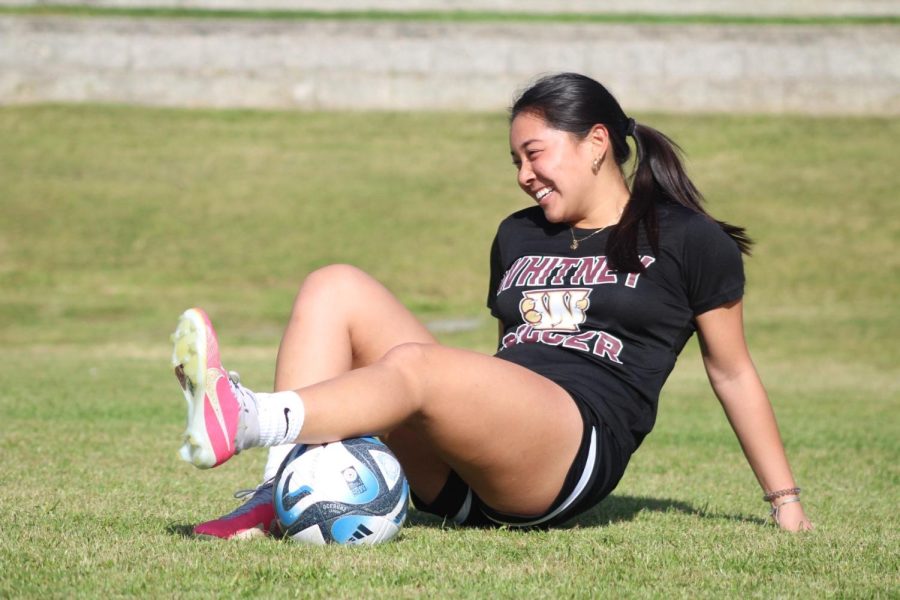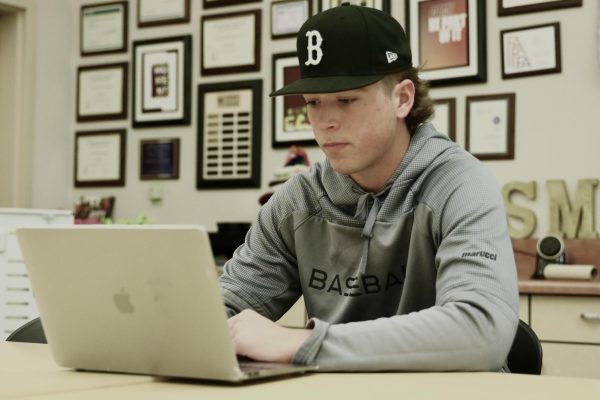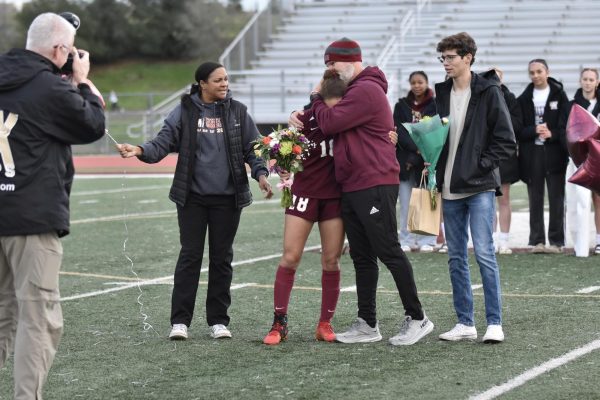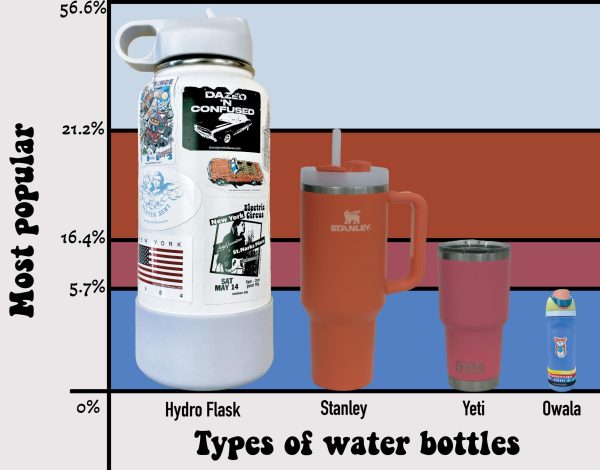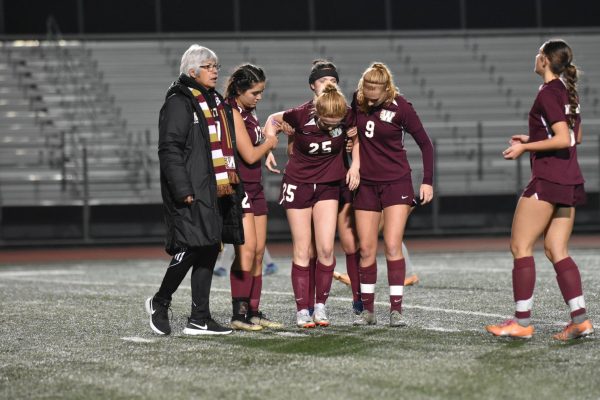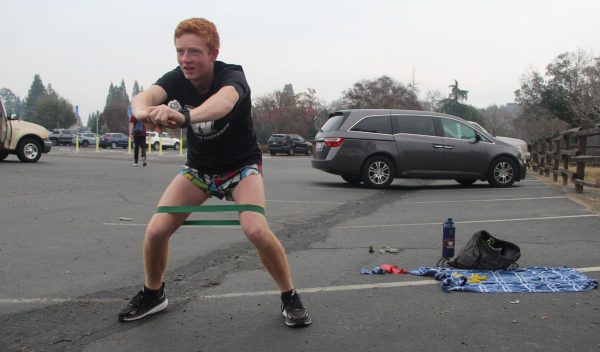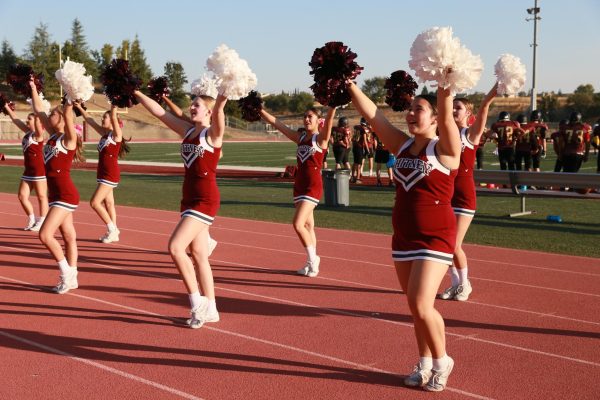Varsity soccer player Christine Louie recovers from sports-related injury, returns to game
At Margarat Azevedo Park, Christine Louie rolls out with a ball to help the blood flow in her calf after a training session April 14. Louie stretches after every practice due to her Chronic Compartment Syndrome. Photo by Emerson Kibby
Running around the field, a pulsing pain strikes Christine Louie under her shin guard. The Bio Freeze she put on has sweated off, and the lack of blood flow in her shins has caused her feet to go numb. She leans over to touch her lower legs and tries to restart feeling, knowing she has to play the remaining 50 minutes of the game.
The transition from club to school soccer is more than just playing with new people and wearing a different uniform. Playing on a new surface can affect a player’s ability to perform more than one would think. Soccer clubs such as Rocklin FC, Davis Legacy and Placer United play and practice on grass fields, but all teams in the SFL play on turf.
“I think the turf made my shins worse because when playing on turf, there’s such a big impact on every step — when you’re running, walking or really anything. It sparked all my shin problems because I had shin splints once before it, but then playing every game and playing five days a week just made everything a lot worse,” Louie said.
As a freshman, Louie started in all 18 games on the women’s JV soccer team and was later pulled up to varsity for the playoffs. Because of the amount of time she was playing, she suffered from Chronic Compartment Syndrome, a condition in which increased pressure within an area of the body results in an insufficient amount of blood supply to the tissue in that space.
“My shins were really inflamed when I was playing, and my feet would go numb on the field. I experienced shin pain for seven months in a row after high school season. It didn’t matter how much I rolled out or how much Bio Freeze I put on, nothing helped for the pain,” Louie said.
Coming into her sophomore season, Louie decided to take an eight-week break to give her shins time to recover.
“It was really hard not just for me, but for the team, being that she’s strong on the defensive side. I was hoping to see her play more during the season but it was good when she came back. She fell behind a little bit but she’s strong enough to be on varsity and she’s doing good now so I can’t wait for next year,” Coach Ana Jones said.
However, Louie was not the only one having to sit out due to injury. Mallory Turner was also out during the majority of the season with a fractured growth plate in her hand. As a goalkeeper and defender duo that has been playing together for over five years, Turner said the time they spent together sitting out made their chemistry on the field even stronger.
“Having someone else there also being injured and just doing everything together was definitely nice and made my experience better. It was more fun together with [Christine] than having to shag the balls by myself or do everything by myself,” Turner said.
The women’s varsity soccer team was bitten by the injury bug during pre-season, with more than four players having to sit out before reaching league play in January.
“Having a lot of other injured teammates made it a lot better and more fun because I had people to talk to and they related to not being able to play and missing out,” Louie said.
In order to recover, Louie had to do stretching exercises not only in the shin area, but in her calves to lessen the stress when she runs. Louie returned to soccer Jan. 1 against Folsom.
Louie said, “Playing with other girls on the varsity team that were committed to colleges was definitely a step up for me because I was held to a much higher standard. But I liked it because there was always a fight for something and it gave me a purpose for what I was doing.”
by EMERSON KIBBY & CARSON NICHOLS

